Surfing in the Center of Portugal
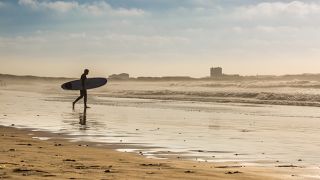
Between Ovar and Torres Vedras, there are about 300 km of Atlantic coast in Central Portugal that surfers can explore in search of the perfect wave or simply to be amazed by the variety of waves.
Summer is the most attractive season on the west coast for spending time on the beach, but early autumn and winter is when the best surf can be seen as the sea becomes wild and challenging.
Nazaré and Peniche are world famous surfing centres, but there are lots of other surf spots to be discovered. A trip along the coast will reveal beaches offering excellent surfing conditions. For those with limited experience or who want to get to know the Atlantic better, surf schools have programmes offering the best spots and the best waves, away from the most crowded areas.
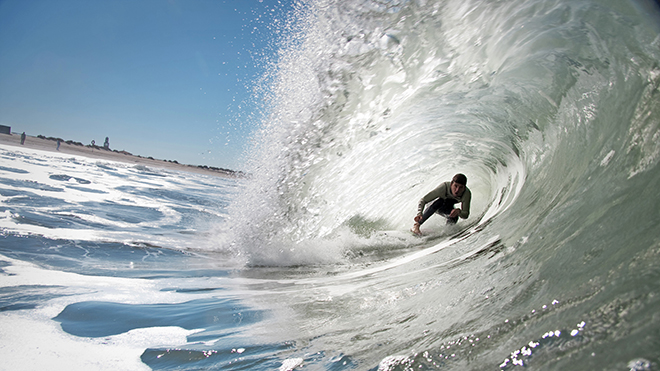
Aveiro © André Carvalho
Moving from north to south, the Aveiro coast is an option for a first stop. It’s rare for there not to be waves at Praia da Barra at heights that provide great sport for any type of surfer. Costa Nova beach might not be a surf spot but it is known for its white, red and blue striped houses and is well worth a visit, as is Mira Beach, one of the first in Portugal to be awarded the Blue Flag and where traditional fishing methods are preserved. On this stretch of coast, the fishermen still practise the art of Xávega - the nets are thrown into the sea in small boats and pulled into the beach by hand (now with the help of machines).
The beaches of Figueira da Foz with their long, straight waves, are a real hit with the surfing community. The waves at Praia de Buarcos can reach 800 metres long in winter and are believed to be the longest in Europe. Praia do Cabedelo was the venue for the first world surf championship, in Portugal, in the 1980s.
Primeiro Molhe, Figueira da Foz © André Carvalho
Continuing along the coast along the green expanse of Pinhal d'El Rei, an ancient forest planted in the 13th and 14th centuries, it is worth passing through São Pedro de Moel, with its sheltered bay protected from the north wind.
Next comes Nazaré, with its amazing sea. The sea-bed forms a gorge 230 km long and 5,000 metres deep known as the “Nazaré Canyon”, which produces the giant waves that crash onto Praia do Norte. Known for the most fearless Portuguese surfers, the phenomenon gained a place in world surfing when Hawaiian Garret McNamara broke the Guinness world record by riding a 30-metre wave. Since then, many surfing enthusiasts have flocked to this spot, with its wonderful viewing point at the Fort of São Miguel Arcanjo.
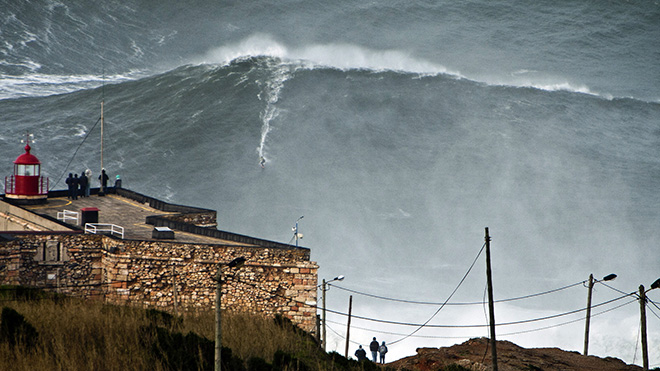
Garrett MacNamara Wave, Praia do Norte, Nazaré © Tomané
About 60 km further south, the Peniche peninsula is a special place for surfing. Its configuration offers a coastline that is partly north-facing, with the Belgas, Almagreira, Lagido e Norte beaches, while the other south-facing part offers the beaches of Molhe Leste, Medão Grande, Consolação and Batel. Surfers can enjoy an offshore wind and lots of days with tubular waves, ideal conditions for both more experienced and amateur surfers. The beach at Medão Grande, better known as Supertubos due to the shape of its waves, is one of the most important - every years it hosts the Meo Rip Curl championship, a stage of the World Surf League. 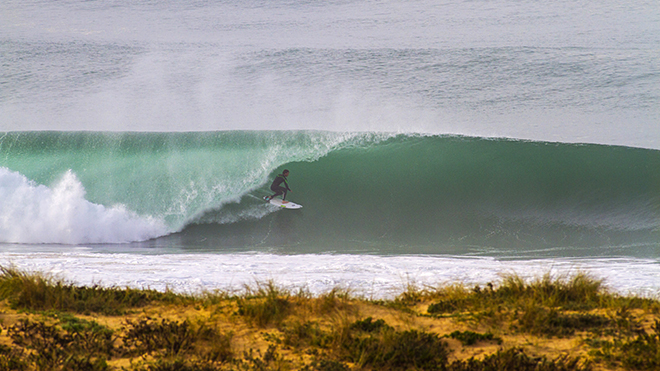
Peniche © André Carvalho
Nearby, the rugged beaches of the Santa Cruz area are a challenge for the world's best surfers and are often chosen to host various international surfing competitions such as the Santa Cruz Ocean Spirit.

Santa Cruz Beach Noah Surf Bar © Emanuele Siracusa
In addition to surfing and the beaches, the trip offers the rich heritage and traditions of the fishing villages that can be explored along the coast - including, of course, the wonderful fresh fish and seafood specialities of Portuguese cuisine, with its close links with the sea.


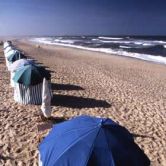

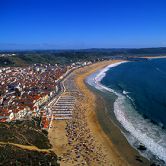


 Explore
Explore 
 Remember and Share
Remember and Share 


